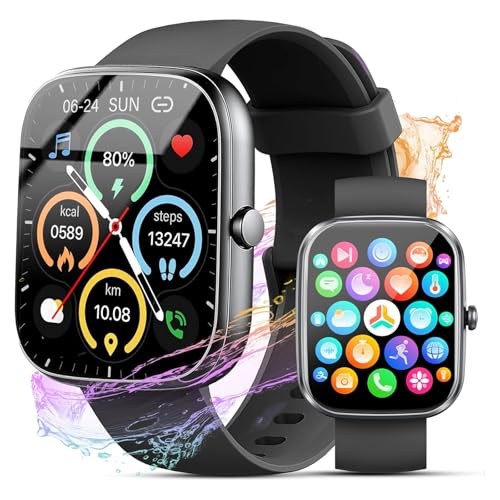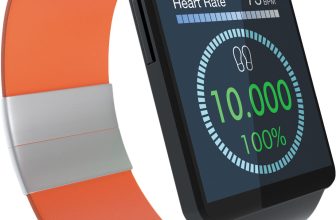
Fitness Trackers
No products found.
Introduction to Fitness Trackers
Fitness trackers have rapidly evolved from simple pedometers to sophisticated wearable devices that monitor multiple aspects of health. In today’s fast-paced world, staying on top of personal wellness is essential, and these smart gadgets offer an accessible way to track daily physical activities, sleep patterns, and heart rate. Initially designed for athletes and fitness enthusiasts, modern fitness trackers now cater to everyone—from busy professionals looking to improve their overall well-being to seniors aiming to maintain an active lifestyle. Their integration with mobile applications and smart ecosystems means users can analyze their progress, set goals, and even receive personalized health insights.
As technology advances, the boundaries of what these devices can monitor are constantly expanding, making them a key component in the broader landscape of health and wellness.
The allure of these devices lies in their simplicity and the powerful data they provide. With just a glance at your wrist, you can gain insights into your daily steps, calorie expenditure, and even stress levels. Their affordability and ease of use have contributed to their widespread adoption. Moreover, many fitness trackers now come with advanced sensors and connectivity features that allow them to interact with smartphones and other smart devices, ensuring that health data is accessible anytime and anywhere.
Benefits of Using Fitness Trackers
Embracing wearable technology can transform your approach to health and wellness. One major benefit is the increased awareness of your physical activity. By keeping an accurate record of your daily movement, you can identify trends and set realistic goals. Users often report that seeing hard data about their habits encourages them to take small, positive steps—such as choosing to walk instead of drive, or engaging in regular exercise.
Another advantage is the ability to monitor vital signs. Many devices offer continuous heart rate monitoring, sleep quality analysis, and even stress management tools. These insights help individuals tailor their routines to ensure optimum performance and recovery. Additionally, the social aspects of these devices should not be underestimated. Many come with features that allow users to share their achievements, participate in challenges, and even compete with friends, fostering a supportive community that motivates sustained progress.
Moreover, the integration with smartphone apps means that your fitness data can be used to provide personalized recommendations. Whether it’s suggesting a new workout, offering dietary advice, or alerting you to potential health issues, these benefits go far beyond just counting steps.
Key Features of Wearable Health Devices
Modern wearable health devices offer a range of functions designed to meet the diverse needs of users. While the basic function of tracking movement remains a cornerstone, many devices have expanded their capabilities considerably.
Activity Tracking: At the core, these gadgets record steps, distance, and calories burned. Advanced models can differentiate between various activities such as running, cycling, and even swimming.
Heart Rate and Sleep Monitoring: Continuous heart rate monitoring provides insights into cardiovascular health. Integrated sleep trackers analyze sleep quality, offering advice on how to improve rest and recovery.
GPS and Navigation: For outdoor enthusiasts, built-in GPS tracks routes during runs or hikes, offering detailed maps and performance analytics.
Integration with Health Apps: Many devices sync seamlessly with popular health and fitness applications, providing a centralized hub for managing workouts, nutrition, and wellness routines.
Water Resistance and Durability: A robust design ensures that many modern devices can withstand water, dust, and the rigors of daily wear, making them suitable for a wide range of activities.
Battery Life and Connectivity: Long battery life and reliable connectivity features ensure that your device is always ready when you are, reducing the need for constant recharging and syncing issues.
These features collectively enable users to gain a comprehensive view of their health, encouraging a proactive approach to wellness. Whether you’re an athlete, a casual exerciser, or someone who is just starting to focus on health, wearable health devices have something to offer.
How to Choose the Right Fitness Trackers
Selecting the right wearable device can be overwhelming, given the plethora of options available on the market. When deciding, it’s important to consider your specific goals, budget, and lifestyle. Here are some factors to help guide your decision:
Define Your Goals: Determine what you want to achieve—be it weight loss, improved sleep, or increased daily activity. Different devices offer specialized features tailored to various fitness objectives.
Feature Comparison: Look at the core functionalities such as step counting, heart rate monitoring, and sleep analysis. Consider additional features like GPS tracking and smartphone integration if you require more advanced data.
Design and Comfort: Since the device will be worn for extended periods, choose one that fits well and feels comfortable on your wrist. The style should complement your daily attire as well as your fitness routines.
Battery Life: Depending on your usage, you might need a device that offers longer battery life. For those who prefer minimal charging interruptions, models with extended battery performance are essential.
Budget Considerations: Fitness trackers range from basic models to high-end smartwatches. Determine your budget and compare devices within your price range. Sometimes, mid-tier devices offer the best balance between cost and functionality.
User Reviews and Brand Reputation: Research user feedback and expert reviews to gauge the reliability and performance of the device. Reputable brands often provide consistent software updates and better customer support.
Choosing the right device ultimately comes down to balancing features, cost, and personal preferences. Spending some time evaluating your options and reading comprehensive reviews can ensure that you make an informed decision that aligns with your lifestyle.
Integrating Wearable Devices into Daily Routines
One of the most significant aspects of these smart devices is how easily they integrate into everyday life. Whether you’re at work, home, or exercising outdoors, the data captured by your wearable can be seamlessly incorporated into your daily routine. Simple gestures like glancing at your wrist to check your activity stats or receiving subtle vibration reminders to move can make a considerable impact on your overall health. By setting up daily, weekly, or monthly goals in your connected apps, you transform fitness tracking from a passive activity into a dynamic part of your lifestyle.
With regular use, these devices help create awareness about sedentary habits, making it easier to adopt a more active lifestyle. They can serve as a constant motivator to get up, move around, and even take short breaks during prolonged periods of inactivity. The convenience of having real-time health insights on your wrist cannot be overstated, especially for those who struggle to maintain consistency in their fitness routines.
Understanding Activity Data and Metrics
The data provided by wearable devices goes beyond mere step counts. Many of these gadgets offer a detailed breakdown of your daily activities, including distance traveled, calories burned, and even the intensity of your workouts. Understanding these metrics is key to optimizing your fitness routine. For instance, analyzing heart rate variability can help you determine whether you’re pushing too hard or if you need more recovery time. Similarly, sleep tracking features can provide insights into your rest quality, enabling you to adjust your nighttime habits for better recovery.
Data visualization within companion apps often makes it easier for users to interpret these metrics. Graphs, charts, and trend lines provide a clear picture of your progress, highlighting areas of success and opportunities for improvement. When users understand how to interpret this data, they are better positioned to set realistic goals and track their improvements over time.
Staying Motivated with Smart Technology
Staying motivated can be one of the biggest challenges when pursuing a healthier lifestyle. Wearable devices have taken a proactive approach to this issue by integrating gamification elements and social features. Many devices allow users to set daily challenges, earn badges, or even compete with friends. These motivational strategies can transform exercise from a chore into an engaging activity.
Furthermore, personalized insights based on your activity levels can help adjust your routines dynamically. For example, if your tracker detects that your activity levels are lower than usual, it might send encouraging notifications or suggest quick workouts to boost your energy. The integration of smart technology in these devices plays a crucial role in maintaining consistency and enthusiasm in your fitness journey.
FAQs About Fitness Trackers
Q1: What are fitness trackers? A: Fitness trackers are wearable devices that monitor physical activities, sleep patterns, heart rate, and other health-related metrics, helping users maintain an active lifestyle.
Q2: How accurate are these devices?
A: While accuracy can vary by model, many modern devices offer reliable data through advanced sensors and algorithms. For the most precise tracking, look for models with high-quality sensors and good reviews.
Q3: Can fitness trackers help with weight loss?
A: Yes, by tracking daily activity, calorie burn, and exercise intensity, fitness trackers can provide valuable insights and motivate users to reach their weight loss goals through consistent activity and data analysis.
Q4: How long does the battery typically last?
A: Battery life varies among models. Some devices offer several days of battery life on a single charge, while others, particularly those with advanced features, may require more frequent charging.
Q5: Are fitness trackers water-resistant?
A: Many fitness trackers are designed to be water-resistant, making them suitable for activities like swimming or showering. However, the level of water resistance varies, so it’s important to check the specifications of your chosen device.
Fitness trackers continue to evolve, offering an impressive array of features that cater to diverse fitness needs. By understanding the benefits and key features, you can select the device that best suits your lifestyle and start reaping the rewards of a healthier, more active life.








